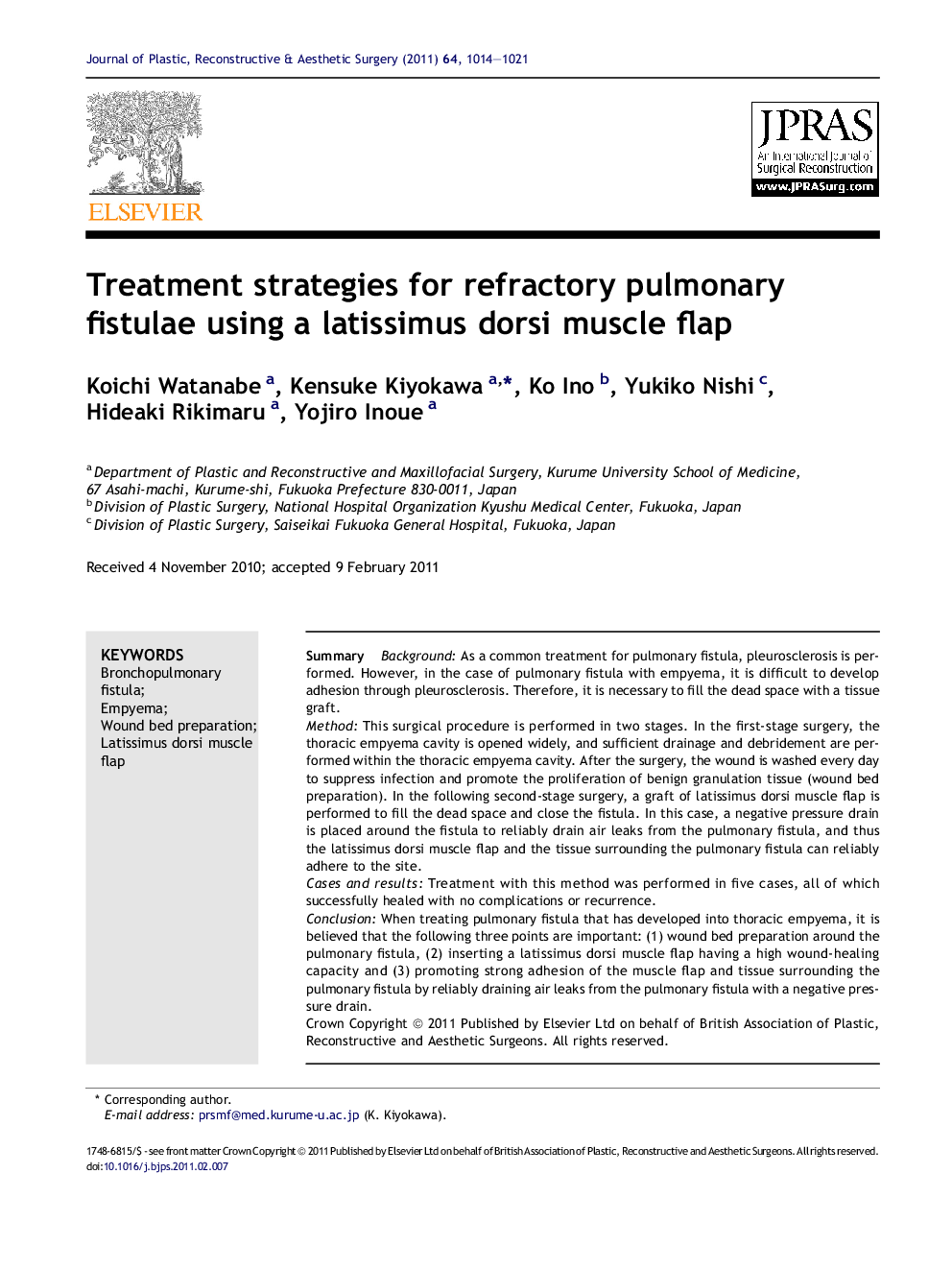| Article ID | Journal | Published Year | Pages | File Type |
|---|---|---|---|---|
| 4120664 | Journal of Plastic, Reconstructive & Aesthetic Surgery | 2011 | 8 Pages |
SummaryBackgroundAs a common treatment for pulmonary fistula, pleurosclerosis is performed. However, in the case of pulmonary fistula with empyema, it is difficult to develop adhesion through pleurosclerosis. Therefore, it is necessary to fill the dead space with a tissue graft.MethodThis surgical procedure is performed in two stages. In the first-stage surgery, the thoracic empyema cavity is opened widely, and sufficient drainage and debridement are performed within the thoracic empyema cavity. After the surgery, the wound is washed every day to suppress infection and promote the proliferation of benign granulation tissue (wound bed preparation). In the following second-stage surgery, a graft of latissimus dorsi muscle flap is performed to fill the dead space and close the fistula. In this case, a negative pressure drain is placed around the fistula to reliably drain air leaks from the pulmonary fistula, and thus the latissimus dorsi muscle flap and the tissue surrounding the pulmonary fistula can reliably adhere to the site.Cases and resultsTreatment with this method was performed in five cases, all of which successfully healed with no complications or recurrence.ConclusionWhen treating pulmonary fistula that has developed into thoracic empyema, it is believed that the following three points are important: (1) wound bed preparation around the pulmonary fistula, (2) inserting a latissimus dorsi muscle flap having a high wound-healing capacity and (3) promoting strong adhesion of the muscle flap and tissue surrounding the pulmonary fistula by reliably draining air leaks from the pulmonary fistula with a negative pressure drain.
